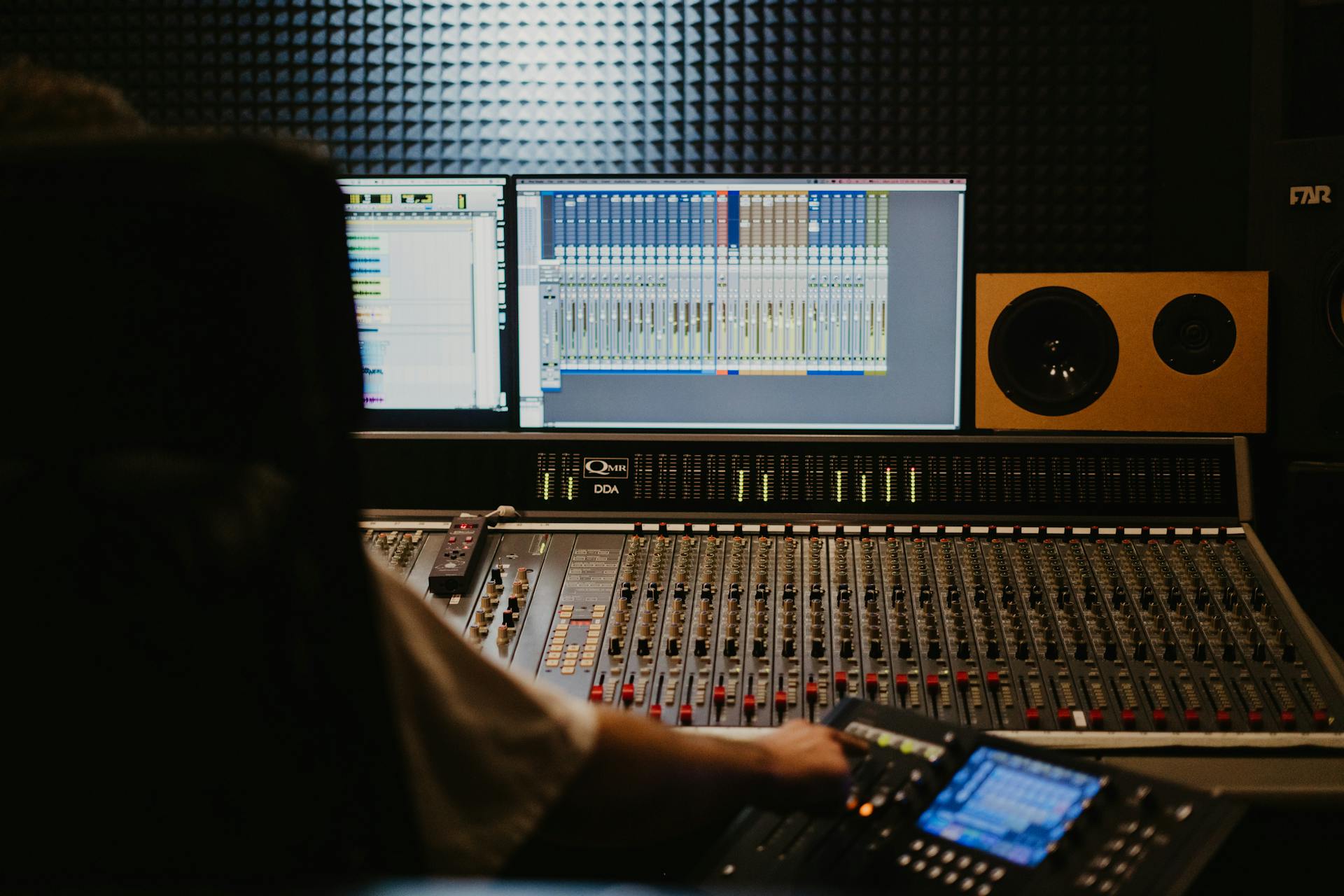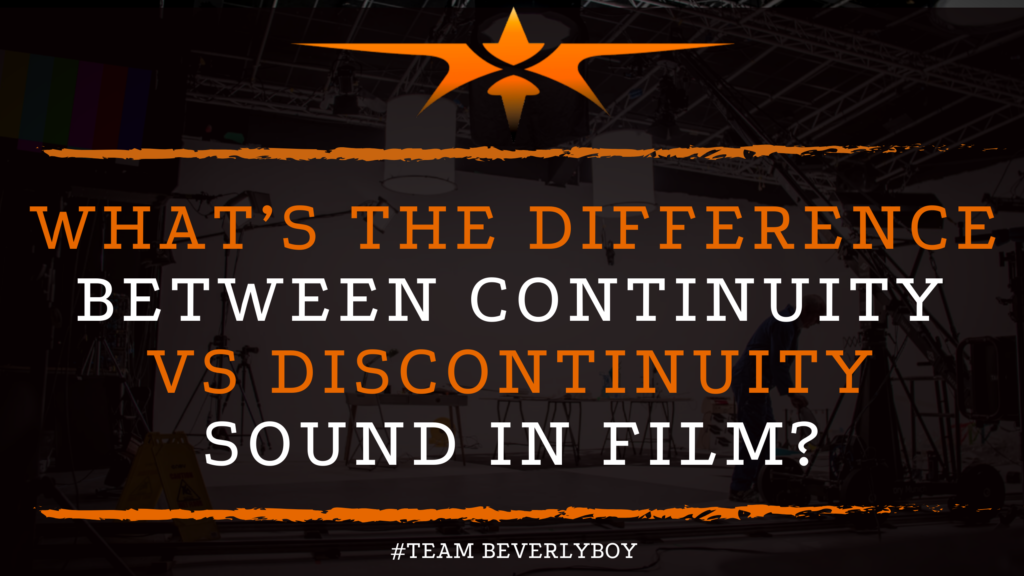What’s the Difference Between Continuity vs Discontinuity Sound in Film?
Establishing a consistent flow of visual shots, physical scenes, character presence and sounds in film is incredibly important to the overall continuity of the project. In order to establish the differences between continuity vs discontinuity sound in film, many aspiring editors and film industry students must spend some extra time studying the ways that continuity editing is established.

And learning how to engage specific forms of continuity sounds both continuous and when juxtaposed as a montage.
What is Continuity Editing in Film?
Continuity editing represents the process of editing a film in post-production such that each shot is smooth and continuous. Producing a film that is consistent, from shot to shot, scene to scene.
Such that each and every shot or scene appears to flow seamlessly for the audience represents continuity. When editing reinforces this balance or continuous flow, the term we use is continuity editing.
Typically the purpose is to create and reinforce an overall sense of realism within the story. But what about continuity vs discontinuity sound in film?
Narrative Editing
We often refer to continuity editing in film as narrative editing. This is because continuity editing is for helping to drive the story in a smooth, continuous and coherent manner. Transitions occur between shots and they are meant to be invisible to the audience.
This is the sign of an excellent continuity editor. The same would go for sound. When continuity sound editing takes place. There should be no question as to the sound that is heard as it should flow naturally and continuously within the story.
What is Discontinuity Editing in Film?
Discontinuity editing represents the editing of a film in post-production. Such shots juxtapose in a montage of sorts. There is no continuous and coherent flow.
But instead there is emphasis on the difference between shots and the end goal is to draw attention to a particular shot, scene, or sound. Particularly, when we look at the difference between continuity vs discontinuity sound in film.
There is a distinct juxtaposition of sounds that create new meaning for the scene based on the transitions and ultimately a particular sound draws the attention of the audience.
Difference Between Continuity vs Discontinuity Sound in Film
So what’s the difference between continuity vs discontinuity sound in film and how can a newbie recognize the differences? Really, when it comes to continuity sound vs. discontinuity sound in film.
The differences are as follows:
- Continuity sound uses a continuous diegetic flow.
- Discontinuity sound uses a montage or sound collage. In which sounds are put together in no particular order or organization.
- Continuity sound uses a sound bridge so that there is a natural connection of sounds from one to the next.
- Discontinuity sound represents the creation of a new song, section of music or notes specific for the film. It is not natural nor is it necessarily composed to match the natural flow of the film.
- Continuity sound is likely diegetic. It makes sense for the sound to be present as it has a specific visible purpose on the frame.
- Discontinuity sound typically represents a sound that is non diegetic and may include things like non diegetic inserts.
Is Continuity Sound or Discontinuity Sound Better in a Film?

Sometimes, filmmakers are most interested in figuring out the difference between continuity vs discontinuity sounds in film purely because they’re trying to determine exactly what is going to be most suitable for their production.
The reality is, there will almost certainly be a mix of both continuity sounds and discontinuity sounds in your film when the final cut is released. This is because you’ll have a mix of sounds that one can use to perfectly flow with the film.
As well as sounds that are clearly a mashup that is produced purely for the purpose of the production – and both are fine!
Editor’s Consideration
While continuous sounds are most likely for most films, discontinuous sounds such as intermittent sounds. Or those which are inconsistent to the scene are also going to come up in some cases.
Sometimes, the editor is going to consider the use of sounds that may not specifically relate to the immediate situation at hand. And these sounds could impact the continuity of the film. But it is still acceptable to include these sounds into the story for a variety of reasons.
How can a Film Student Recognize Continuity vs Discontinuity Editing?
When it comes to different sounds, the easiest way to describe continuity editing or continuity sounds is when thinking about diegetic sounds in filmmaking. A student filmmaker that is attempting to understand all of this should learn about diegetic vs. non-diegetic sounds first.
Because most continuity sound in film is diegetic whereas the majority discontinuity sound is not diegetic. In fact, you can consider most discontinuity sounds in film as non diegetic.
Not sure what the difference is between diegetic sound vs non diegetic sound, which is important to you figuring out the difference between continuity vs discontinuity sound in film?
We’ve got a post that explains the differences quite clearly for filmmakers and those interested in learning more about diegetic sounds which take place within a film, here.
In Summation
So, what’s the difference between continuity vs discontinuity sound in film and why is it important for a filmmaker to understand the two? Continuity sound is that which is generally diegetic, existing in the narrative world of the film.
And which runs along with the narrative without any major interruption in the flow or connection of the sound to the footage.
Likewise, discontinuity sound in film is often nondiegetic or occurs outside the conventions of the viewing area or outside the narrative world and does not necessarily exist with the natural flow of the narrative.

